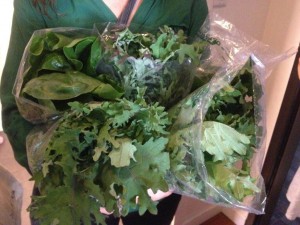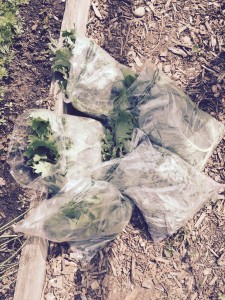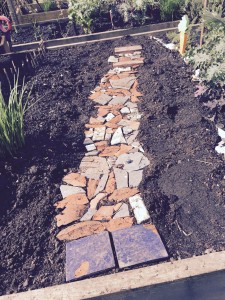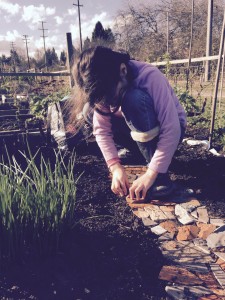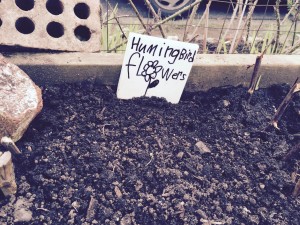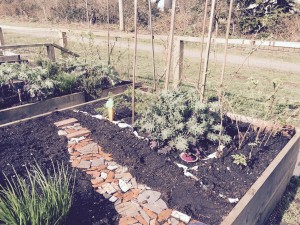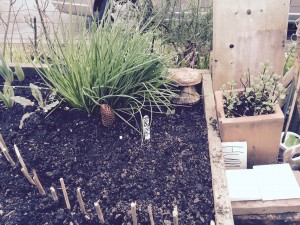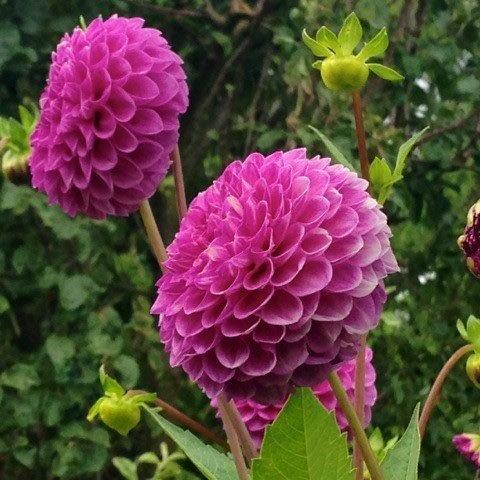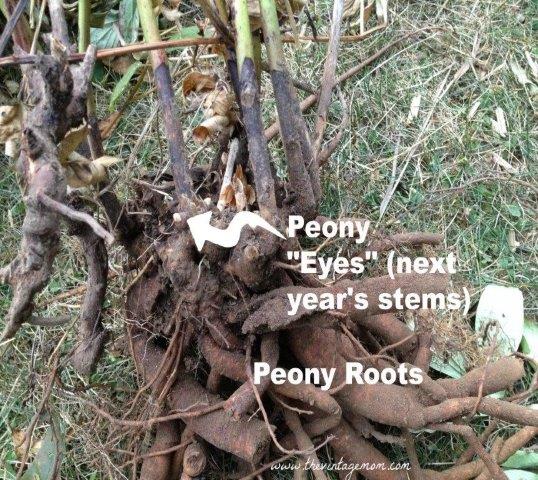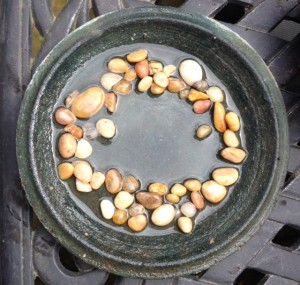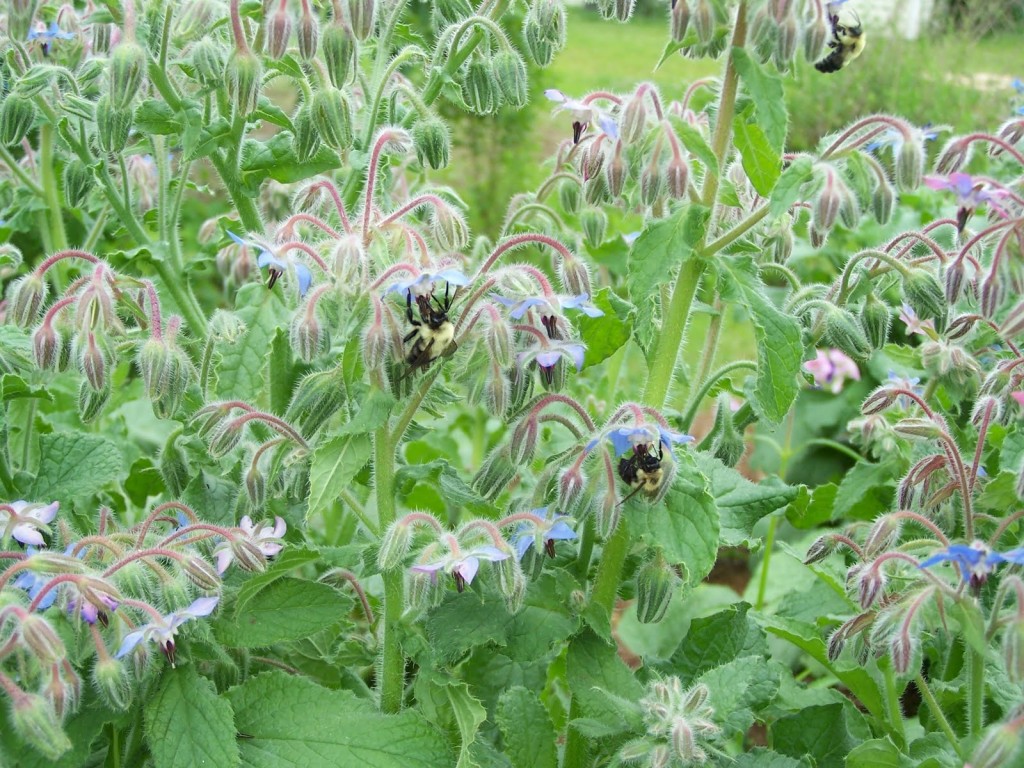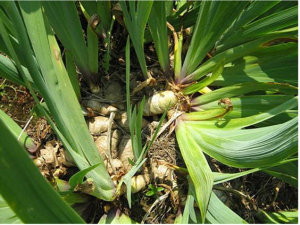a) Winter mulches: Remove in early March and compost them. See Guidelines For Communal Composting to figure out which composter to use.
b) Garden beds: Prepare for planting. Ideally, lime and manure would have been added to the soil back in the Fall. However, you can also do it in the Spring by working in plenty of compost/mushroom manure/sea soil (one 20kg bag will support our smaller plots), then two weeks later dig in about 1 cup of Dolomite lime. The lime comes in a big bag so it could be shared by a Section or two. Avoid adding lime to areas where you might plant potatoes or blueberries. Do not plant anything for at least one week after adding the lime, it needs a bit of time to settle into the soil.
c) Organic fertilizer: Ideally, add to soil a few weeks before you sow seeds or plant seedlings. Maple Community Garden is an organic gardening area, and organic fertilizer contains many micro nutrients of value for plants which release slowly without washing away as fast as chemical fertilizers.
Recipe for Homemade Organic Fertilizer
1 part Blood meal Nitrogen (N)
2 parts Bone meal Phosphorus (P)
1 part Kelp meal Potassium (K)
The above ingredients are found at most garden centres and feed stores, and this recipe provides an N-P-K ratio of approximately 4-5-4 to 5-8-5. Nitrogen promotes vigorous growth, phosphorus improves flowering and root system growth, and potassium assists with fruit quality, root growth and reduction of disease.
d) Planters or pots: If you are using any in your garden, remove the first 4” of old soil and add Sea Soil or Soil Energizer to top up the planters.
e) Perennials: Lift and divide perennials, plant before too much growth starts.
f) Summer flowering plants and bulbs: In garden centres now, here’s a blooming guide for common plants:
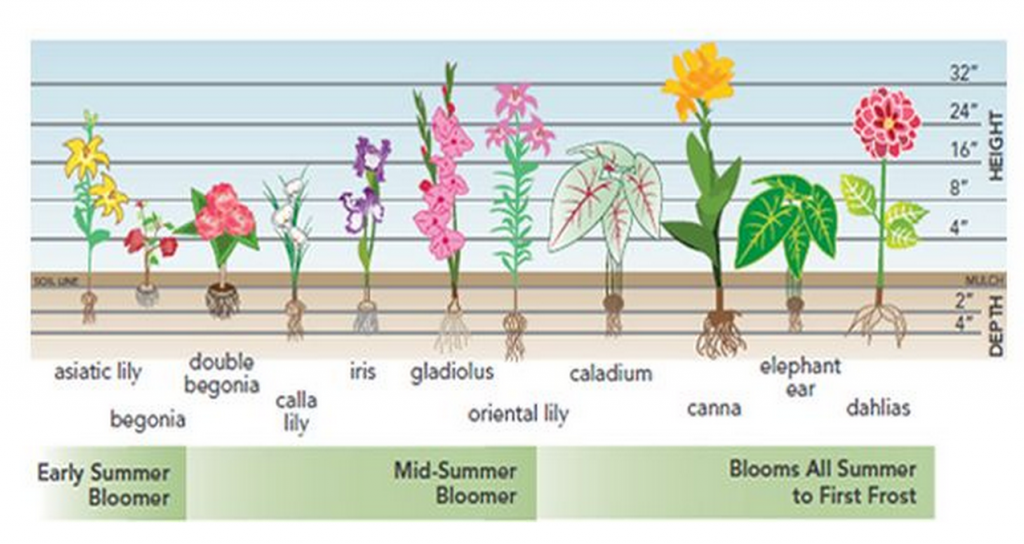
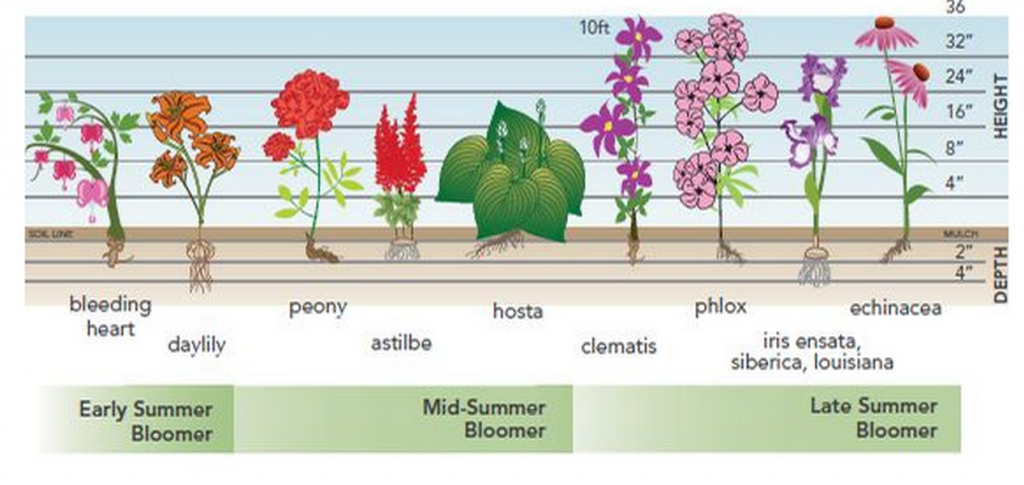
g) Bush & cane fruit: Blueberries and raspberries will be in the stores soon for planting. Prune existing blueberries by removing any dead and crossing branches. Cut fall raspberry canes down to the ground, as well as old canes of summer bearing plants. Now is a good time to plan supports for raspberries : )
h) Vegetables: Plan rows going from North to South for the most sun exposure. Be sure that larger plants are at the North end of the plot to prevent shading of smaller plants, and shading plants in your neighbours’ gardens. If you are interested in practicing companion planting to enhance natural pest control and productivity, here is a simple guide:
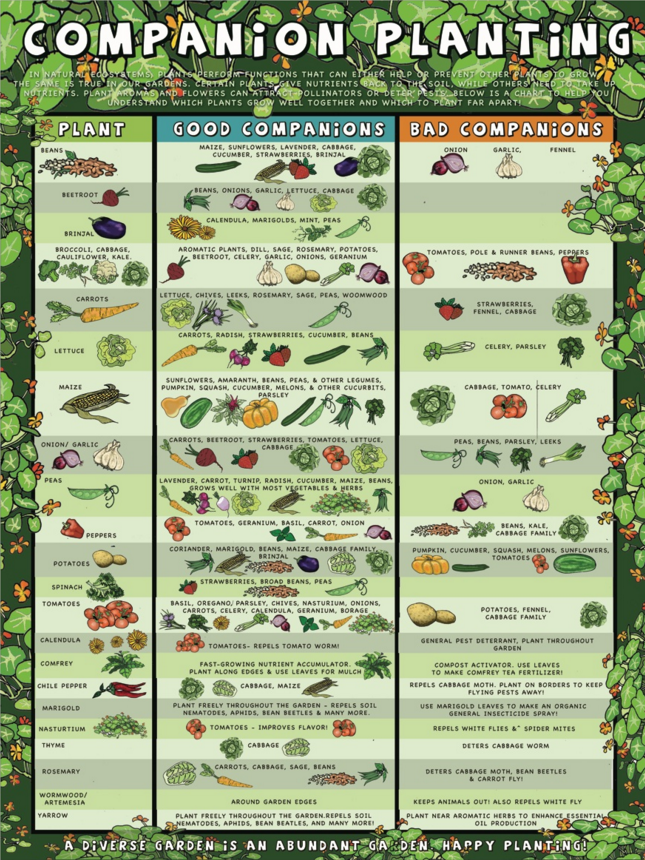
afristarfoundation.org
Beginning of March: Sow kale and parsley and start successive sowings of peas, spinach, radishes, and lettuces about every 2-3 weeks. Plant veggie seedlings as they become available in garden centres. Safer’s Slug Bait is a good organic choice if you find slugs damaging new shoots and bulbs.
Mid-March: Remove spring bulb flower heads as they mature and let the leaves die down naturally. Sow sweet pea seeds.
Later in March: Once the danger of frost has passed,
- plant Dahlias, Canna lilies and Gladiolas;
- plant onion sets, turnips, and greens such as bok choy;
- set out new strawberry plants and feed established plants with diluted fish fertilizer;
- sow seeds of annual herbs (except basil, too early to plant yet); and
- prune established herbs such as sage and thyme that have become leggy.
Fertilize garden plants, vegetables, flowers and herbs with diluted fish fertilizer throughout the growing season. Fertilized blueberries, which are acid lovers, with a Rhododendron or Tree& Shrub fertilizer before buds break and after flowering according to label.
Seems like gardening chores are never done : ) Try to enjoy your garden too and watch as things push through the earth on their way to another great gardening season!

